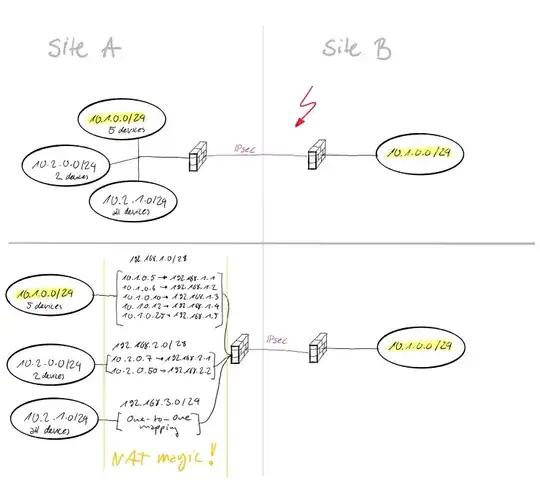I'm trying to set up an IPsec connection between two sites: our Azure network and our client's local network. To be flexible and avoid any current or potential future IP range overlappings I wand to "NAT away" some networks of one (or both) sides of the tunnel. Unfortunately, sometimes these overlappings cannot be avoided since we cannot force our clients to change their network configuration.
To make it a bit more complex, I want to be able to NAT only some of the devices in certain networks, not the network as a whole. This gives the maximum flexibility as some of our clients can't or don't want to reserve a network of equal size as we use and they only need access to certain devices/computers. I.e. it's probably not necessary for them to access the database server, the web servers are enough.
Here's an example:
(Site A would be us, Site B is a client)
 How can this "NAT magic" happen?
We are using an OPNsense appliance in Azure as the resources our clients need to access are there.
How can this "NAT magic" happen?
We are using an OPNsense appliance in Azure as the resources our clients need to access are there.
Can I do this on the OPNsense, where the IPsec tunnel is configured or do I need a second device for that?
Thanks for any hint!